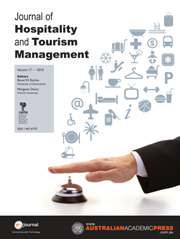Article contents
Organising Haute-Cuisine Service Processes: A Case Study
Published online by Cambridge University Press: 23 February 2012
Abstract
One of the essential aims of service process organisation is to increase the added value for the customer, thereby increasing customer satisfaction and stimulating consumption. In a haute-cuisine context, customers typically have a higher degree of uncertainty as they often lack the experience of receiving and judging quality in a haute-cuisine setting. This article reports on the application of service process organisation in a haute-cuisine restaurant. The case study shows that there is a significant need to reduce back office activities so that interaction with the customer or customer-facing processes can be increased. This can increase the added value for the customer and can result in higher profits for the restaurants as the customer is either willing to pay higher prices or to consume more. Routines should be implemented that align with segmentation and customer data, while undergoing a retraditionalisation of the service through know-how and interaction. Only interaction with, and integration of, the customer adds significant value that can be further expanded by providing an atmosphere where customer and co-customer have the chance to interact.
- Type
- Articles
- Information
- Copyright
- Copyright © Cambridge University Press 2007
- 7
- Cited by




